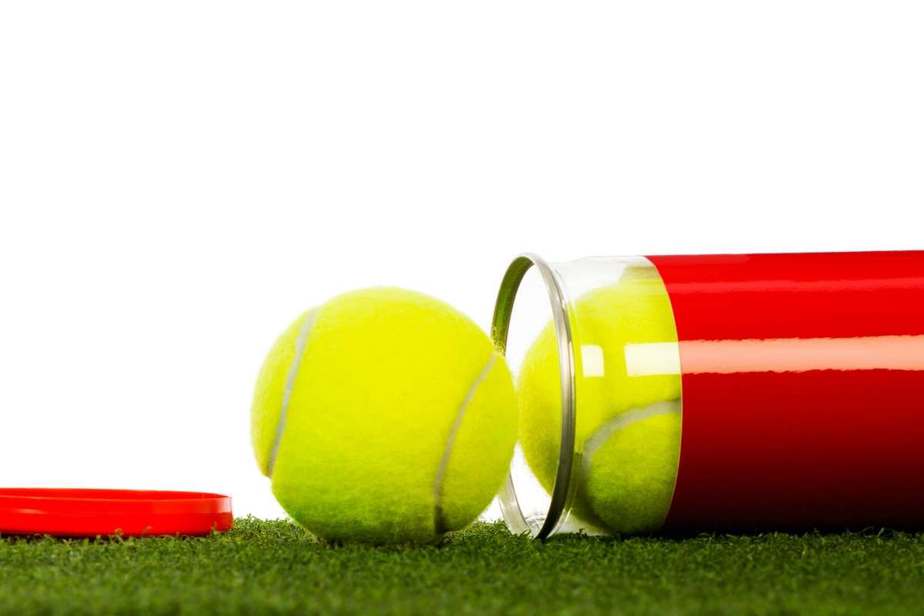Why Are Tennis Balls In Pressurized Cans? (Pressure Secrets)
If you have ever played tennis, you must know that tennis balls often come in a sealed can. It has been so for a long time but have you ever wondered why? There is a significant reason for that.
Tennis balls are sold in pressurized cans because otherwise, the air inside the tennis balls would slowly escape. However, if the can is pressurized to the same psi as the balls, the air will remain, and it will hold its performance. Keeping the balls pressurized will drastically help with bounce.
So there you have it. Tennis balls are sold in pressurized cans because they will hold it’s quality and bounce. As soon as you open the ball can, the balls start to lose air from within, resulting in decreased bounce and overall performance.
If you play multiple times a week with pressurized tennis balls, it can get expensive quickly because they won’t last so long as you would hope. Therefore, I would advise you to save your unopened pressurized balls for serious playing and using older or pressureless balls for training.
On the other hand, if money isn’t tight or you just don’t care that much about maximizing the ball’s quality bounce, then, by all means, use fresh balls all the time; it’s better to play with them anyways. Just make sure that you discard the old balls properly, find another use for them, or donate them to a school or something.
Now, I want to further explain to you do tennis balls need to be pressurized or can you do without pressure? Let’s find out!
Contents
Do tennis balls need to be pressurized?
When it comes to tennis balls, there are pressurized, and pressureless.-Tennis balls don’t need to be pressurized by any means. However, if you want the best quality, then you need to invest in pressurized balls. This is because the ball’s bounce comes from the air inside the ball, making the ball lighter, faster, spinner, and better to play with overall. These balls are only used in competitive matches and never pressureless ones.
The only con about pressurized balls is that the pressure vill eventually leaves, and then it’s pretty much useless…
You can use pressureless tennis balls as well! These are great for training, beginners, recreational use, tennis ball machines, etc. These balls rely on their rubber structure and will only gain bounce when time goes on because the felt worse out, and more of the rubber will get power.
These balls are heavier, slower, and worse in spin and overall gameplay, so that’s why you can’t find them used in competitive play.
That being said, tennis balls definitely don’t need to be pressurized. In fact, I recommend using pressureless balls for training and recreational play because they often last at least one, if not a couple of more years.
Recommended pressureless tennis balls: Tourna Tennis Balls & Mesh Carry Bag
How long do pressurized tennis balls last?
In short, pressurized tennis balls often last 3 hours of constant hitting, which is 3 sessions on average. Tennis balls are changed every 9 games in competitive play, telling you they don’t last that long.
I have an in-depth article about How Long Will Tennis Balls Last that I highly encourage you to read. You can also learn the techniques on how to examine a ball and how to make them last longer within that article.
How long do unopened cans of tennis balls last?
The shelf life of unopened tennis balls is 2 years. Depending on the balls and severity of the can’s micro leaks, this can be increased to 3 years or more. However, they will expire sooner or later despite the belief that unopened cans of tennis balls will last indefinitely.
Why are there 3 tennis balls in a can?
Generally, there are 3 tennis balls in a can because 3 is often used in a match in competitive tournaments. Thus, that makes the 3 ball canister perfect.
However, there are also pressurized 4 ball canisters available.
Conclusion
Tennis balls are inside of pressurized canisters because that prevents the air from escaping them, resulting in a longer lifespan for the ball in terms of bounce and overall quality. I hope that this article was helpful to you, and you now have a better understanding of tennis balls and their canisters.

